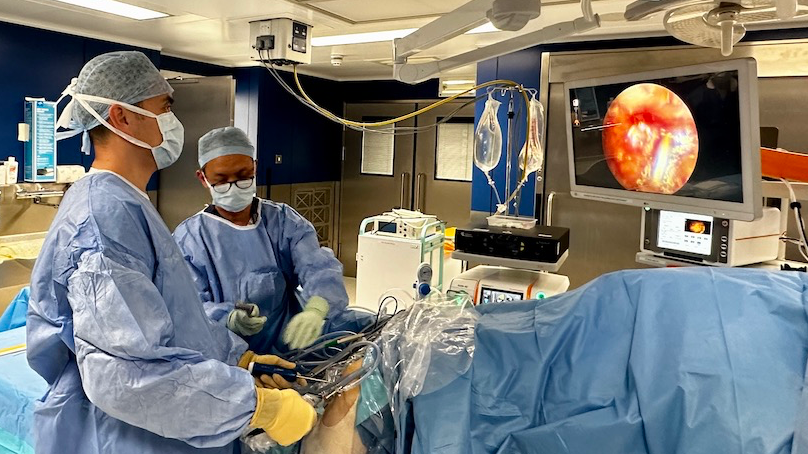A new hip doesn’t have to restrict your movement forever, or even for very long, with the new SPAIRE technique. Prof. Paul Lee of MSK Doctors explains how a new surgical procedure can help you to recover faster, with better mobility and less pain.

With a typical hip replacement surgery, you can have restricted mobility for 6 weeks or longer - but what if you could go home right away, with no restrictions at all?
That's the promise of the new SPAIRE technique, an innovative new procedure that greatly reduces the surgical trauma, making the healing process a breeze. You can learn more about it, or even schedule a consultation with a specialist, at https://mskdoctors.com
The best part is, you don't need a referral from your GP, and there isn't any waiting time. You can just schedule your own appointment, online or over the phone, for any time.
If you want to learn more about the SPAIRE technique before calling an expert - then buckle up, and let's dive right into it.
With new surgical options being developed all the time, it's hard to understand the benefits, drawbacks, and trade-offs of a traditional surgery, in relation to newer, advanced techniques.
You could spend days or weeks pouring through the medical literature, but without being a specialist, it's still hard to understand. That's why I'm a big fan of getting the information we need, right from the specialists who know it best.
In this situation, that's Professor Paul Lee, from MSK Doctors. Not only does he regularly perform this technique himself, but he also helped to perfect it during the early stages, at the renowned Exeter Hip Unit.
The SPAIRE technique is named for its ability to spare several important muscles and tendons in your hip from surgical damage, leading to less overall surgical trauma than a traditional hip replacement.
That's easy enough to understand, by causing less damage during the surgery, it's of course easier to heal after - but it's more than that. By protecting those muscles and tendons, you also have a lot more stability and control during the healing process.
Here's the proof: When your surgery is over, you can stand up and walk right away, with crutches, and no mobility restrictions.
You bet there are - and the best one for you will depend on a few things.
The most popular alternative is called the BIKINI procedure, and it's similar in several ways, but also has some differences. The key difference is that while SPAIRE is focused 100% on getting you the fastest recovery and best post-op mobility, BIKINI also places some focus on minimising the visible scarring.
The SPAIRE technique is often considered the best option for a return to full pre-surgery mobility, but if you're concerned about having a visible scar, it could be worth asking about the BIKINI technique.
The SPAIRE technique is more than just a quick fix, it's also shown significant progress in reducing the amount of pain you may experience during the healing process, and the potential for accidental dislocations.
That's right, faster recovery, more mobility, less pain, and almost no dislocation risk or mobility restrictions. Compared to the traditional option, it's practically magic.
I'm not trying to scare anyone, the dislocation risk is low with any technique, with only up to 3.9% of patients suffering a post-op dislocation, but that's still too many. In a clinical study on the SPAIRE procedure, there were no dislocations reported, at all.
Just remember, there is no one-size-fits-all option. If you need a new hip, talk to a specialist about your options, before making a decision.
It's easier than you think, you can learn all about the latest techniques, or book an appointment with a specialist, with no referral, at https://mskdoctors.com/treatments/spaire-hip
